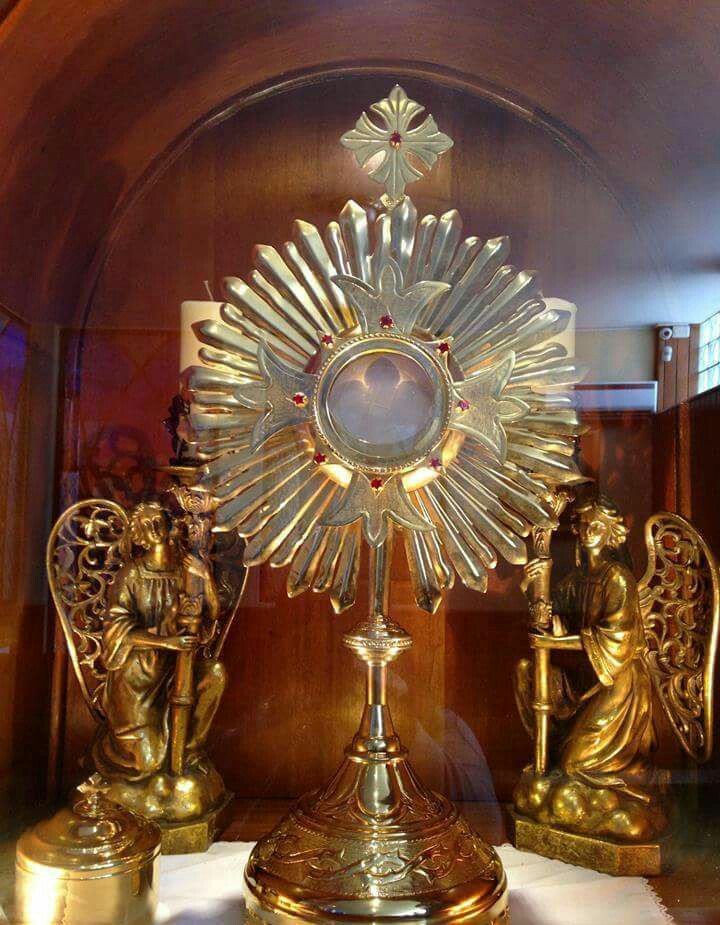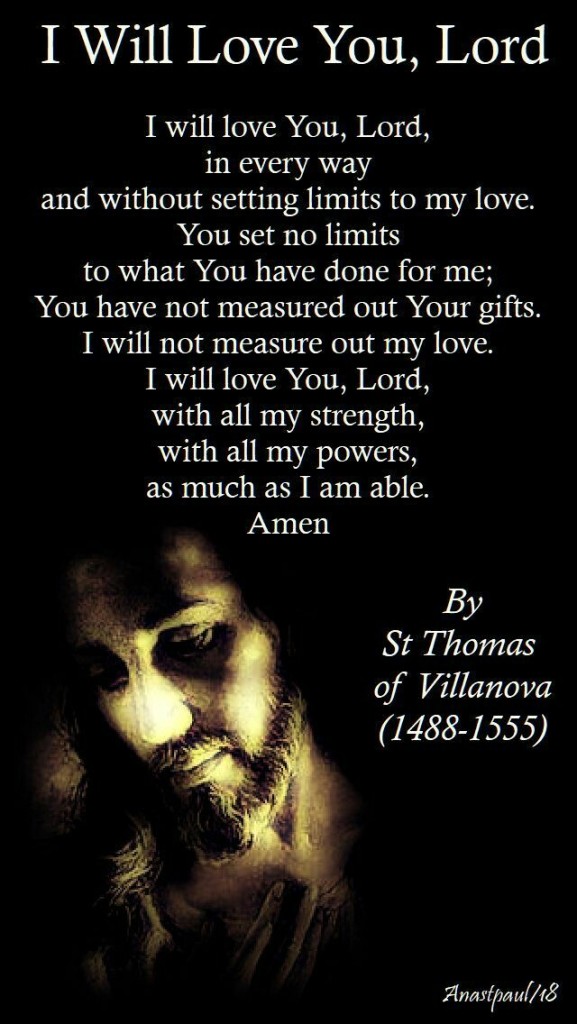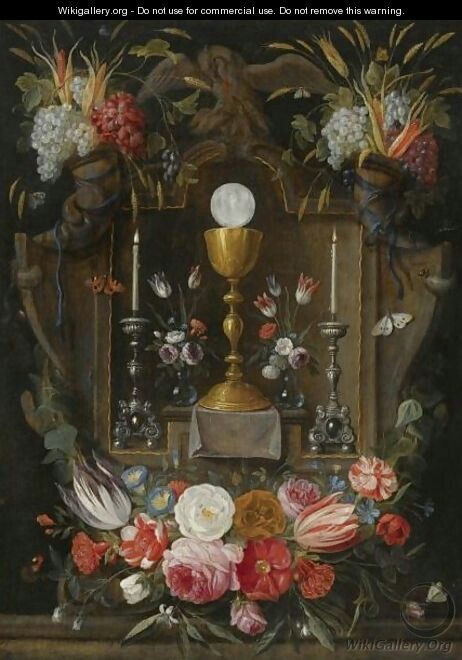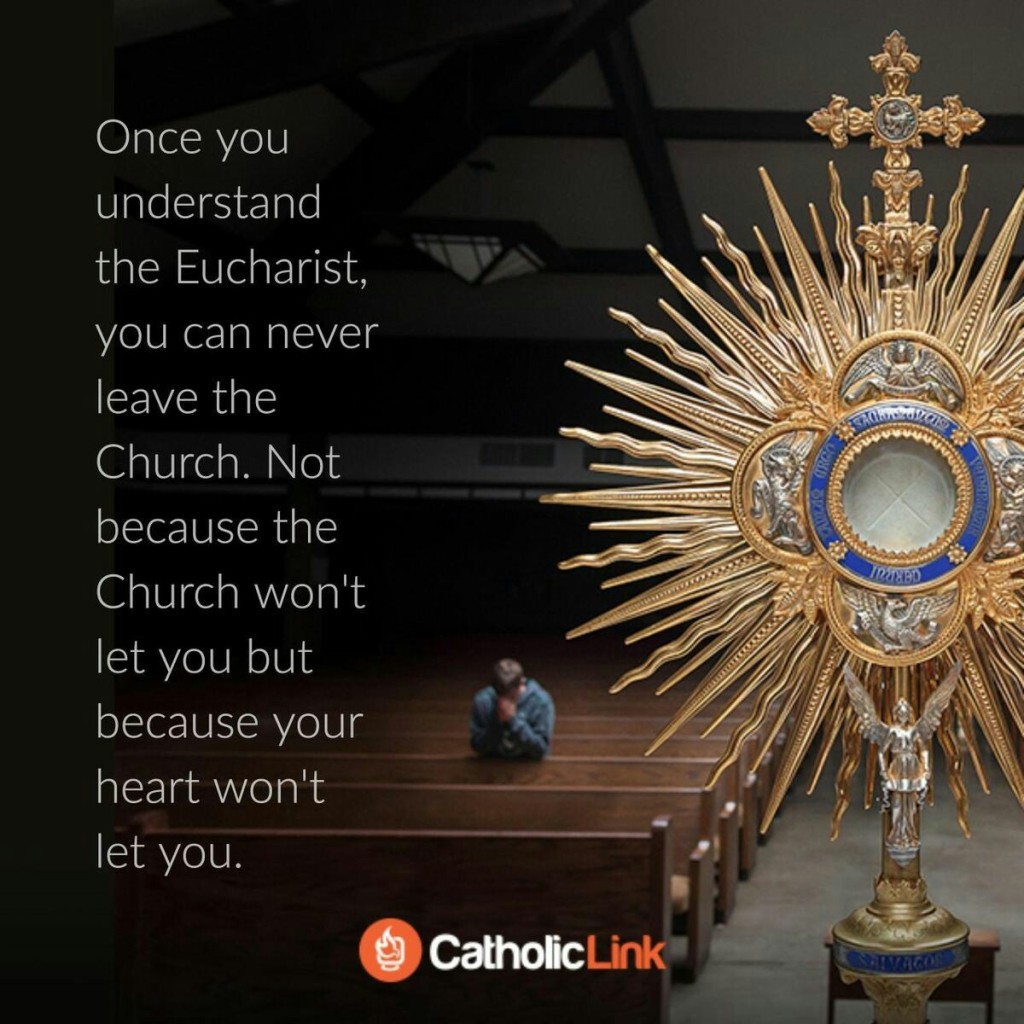The Arrow of Love
Arrow that should be found in the quiver of an intercessor is the Eucharist. Jesus said, “Very truly I tell you, unless you eat the flesh of the Son of Man and drink His blood, you have no life in you.
Whoever eats my flesh and drinks my blood has eternal life, and I will raise them up at the last day. For my flesh is real food and my blood is real drink. Whoever eats my flesh and drinks my blood remains in me, and I in them” (John 6:53–56, NIV).
Shortly before He was taken away to be slaughtered as the sacrificial Lamb, He officially instituted a sacred event.
Thus, while He was sitting at supper with His apostles, Jesus took bread, broke it, and gave it to them, saying:
“Take and eat; this is my body” (Matt. 26:26). In the same way He took the cup after supper and said:
“Drink from it all of you. This is my blood of the covenant which is poured out for many for the forgiveness of sins” (Matt. 26:27–28). Thereafter,
He went to Calvary to be sacrificed and for His Body and Blood to be concretely given up for the life of many.
The Eucharistic Jesus Is a Mighty Force Against the Devil
O Sacrament most Holy,
O Sacrament Divine,
All praise and all thanksgiving,
Be every moment Thine.

Thus, while He was sitting at supper with His apostles, Jesus took bread, broke it, and gave it to them, saying:
“Take and eat; this is my body” (Matt. 26:26).
In the same way He took the cup after supper and said:
“Drink from it all of you. This is my blood of the covenant which is poured out for many for the forgiveness of sins”
(Matt. 26:27–28).
Thereafter, He went to Calvary to be sacrificed and for His Body and Blood to be concretely given up for the life of many.
At no time did He say: “This is a symbol of my body, and this is a symbol of my blood.”
What He gave His followers was rather that Body which He gave up for all men and all women, for their salvation.
It is the Body broken to make us whole again.
He gave us that Blood poured out for many, those that are to be saved, so that sins may be forgiven.
To make sure we have this wonderful spiritual food always, He added,
“Do this in remembrance of me” (Luke 22:19; cf. 1 Cor. 11:25).
In this way, He gave His apostles and their successors the authority to consecrate bread and wine so that they would become His Body and Blood.
This promise can then be actualized only through the breaking of bread, the sacrifice of the Mass.
At every Mass, therefore, Calvary is transplanted to the altar and the events that took place more than two thousand years ago are made actual once again.
 From this wonderful sacrament an intercessor can draw more strength than he can imagine.
From this wonderful sacrament an intercessor can draw more strength than he can imagine.
It is understandable, however, that one may hesitate to accept this teaching.
How is it that an ordinary man called a priest can say some mystic prayers ordained by the Church over some bread and wine and they become the Body and Blood of the crucified Lord, Jesus Christ?
This might be your pattern of thought. But listen to this experience.

During a deliverance session a priest encountered a demon that had possessed a young girl for some years.
The demon was tough and obstinate. He so resisted forfeiting the temple he had taken over that the priest was tempted to despair.
The praying team was already becoming demoralized and discouraged. But then a thought came to him:
“Take him to the Eucharistic Jesus.”
In the chapel, the Eucharistic Lord was brought out to stand as a great King reigning in the effulgence of glory and splendor from the monstrance on the altar.
This article is a preview from
The tide of events changed immediately.
The demon shouted at the top of his voice and with great fright,
“Who is this! Who is this person?” For him, the Eucharist is “who” and “person,”
but for a nonspiritual eye it is “what” and “thing.”
but for a nonspiritual eye it is “what” and “thing.”
We might be seeing a white round substance, but the demons see a person, the Master in His glory.
The demon saw the glory of God filling His temple and was dazed. He closed his eyes.
He was now stuttering,
“Let me go. I don’t want to see Him. Who brought me to His house? We don’t like each other. Take me out of this place!”
“My God! What is he talking about?” the young priest thought to himself. “Is he addressing the consecrated bread on the altar?
But it was just this morning that I consecrated it at Mass.
How could it be this powerful?” He reasoned myopically like the priest Zechariah, who ministered in the Holy of Holies but could still not believe the words of the archangel Gabriel.
Since the priest entered the chapel with the prayer ministers, nobody had said any other prayer outside the chants:
“O Sacrament Most Holy, O Sacrament Divine, all praises and all thanksgiving be every moment thine.”
“O Sacrament Most Holy, O Sacrament Divine, all praises and all thanksgiving be every moment thine.”
At that very moment it dawned on the priest that the consecrated bread was more than what it appeared to be. It is our Lord.
It became the Lord in flesh and blood after consecration.

Though He is in the form of bread and wine, He remains God and identifies himself as “the Lord, who heals you” (Exod. 15:26, NIV); the wounded Healer and the bleeding Messiah (Isa. 53:5);
“the Lion of the tribe of Judah” (Rev. 5:5).
After the Consecration, the Church calls this bread Sanctissimum, which means the “Most Holy,” and only God can take this title.

The “Man of war” (Exod. 15:3, KJV) was going to war, and the kingdom of this demon, who had been tormenting this young girl for some years, was badly threatened.
When he saw that he had been cornered, he decided to engage the Master in a fight. His plan was to push Him down from the altar.
At first, the praying team tried to protect the Lord from being pushed down, but after some thought, the priest felt that He should be allowed to fight for Himself and asked the prayer ministers to let the demon do what he wished.
The demon then rushed with a terrific speed and force toward the altar.
But just an inch away from the altar, he stopped with an automatic halt, as if controlled electronically.
He tried again and repeated the first experience. He drew back the third time, mustered all his strength and courage and tried again.
This time he succeeded having a brush with the altar cloth. It was then that hell was let loose on him. The demon was rattled.

He was thrown up high and dashed with a heavy thud on the hard floor and set into a bout of rolling, wriggling, and shouting until he begged to leave.
The Eucharistic Jesus is a mighty force against the devil.
The devil sees in the Sanctissimum the crucified Jesus as He really is.
A human cannot see this except with the eyes of faith. This is why it is called a sacrament — the bread is a sign of the invisible reality behind it.
The Church duly acknowledges the power in the consecrated bread and has given it a home in tabernacles found in millions of churches and chapels throughout the world.
She did this in order to make the Lord sacramentally present in these places so that believers could go there to adore Him and also to present their troubles to Him and be healed.

Because Jesus Himself is at every Holy Mass, wonderful miracles are experienced daily by very many people throughout the world each time the Mass is celebrated.
At this sacred time, the Lord is fully present, the events of Calvary are once again enacted, sinners are made clean, the despondent strengthened, the sick receive healing, and prayers answered.

Fr. Emiliano Tardif, who died in June 1999, had a spectacular gift of healing. Many people throughout the world received healing through his grace-filled ministry.
Worthy of note in his ministry is that it was very closely connected with the Holy Mass.
Within the Mass or just after it, he would receive a word of knowledge about those who were to be healed or being healed.
Within the Mass or just after it, he would receive a word of knowledge about those who were to be healed or being healed.
When he began to pray, the glory of the Lamb that was to be slain or was just slain at the Mass would begin his ministry of healing.
According to Fr. Tardif’s personal testimony of what happened in Nagua (Dominican Republic):
“We celebrated the holy Mass and the Lord began once again to heal the sick. . . . He healed on that Sunday not only two or three sick people but a tremendous crowd.”
With such manifestations, believers continue to realize that “the reason the Son of God appeared was to destroy the devil’s work” (1 John 3:8, NIV).
With such manifestations, believers continue to realize that “the reason the Son of God appeared was to destroy the devil’s work” (1 John 3:8, NIV).

What prevents an intercessor then from invoking this power for positive wonderful results?
Many miracles are being recorded from encounters with the Eucharistic Lord daily in Holy Masses, Eucharistic adorations, and other Eucharistic activities throughout the world.
One such testimony is that experienced by a young girl who was under satanic oppression. She was once attacked in a dream by some unknown men who almost throttled her to death.

When she got up, her throat was swollen and full of pain. She could hardly speak or swallow anything. She was asked if she could receive Holy Communion.
She affirmed her readiness in accordance with the Catholic tradition.
She was taken to the chapel and a priest ministered Holy Communion to her as he would the sick.
This daughter of Abraham came back to this priest after about two hours to praise the glory of this wonderful sacrament. She was completely healed.
Is this not the fulfillment of the prophecy of Isaiah:
“With His stripes we are healed” (Isa. 53:5)?
Fr. Tardif also gave the testimony of a man who was brought forward on a stretcher during a Mass, as he was testifying to his own personal healing.
This man’s backbone was broken, and he became, as a result, lame for five and a half years.
They prayed for him and pleaded with the Lord specifically to heal him through the power of His holy wounds.
According to Fr. Tardif, the sick man began to sweat heavily and to shiver. The priest knew exactly what that meant and spoke authoritatively:
“The Lord is about to heal; stand up in the name of Jesus.”
He gave him his hand and encouraged him to get up and walk. The man did but slowly.
The man of God spoke again: “In the name of Jesus, go further, the Lord is present to heal you.”
And the Lord made him whole once again. Such is the power of the Lord in the Eucharist.

Alessandro, an Italian living in Rome, gives testimony that confirms the power in the Eucharist.
According to him, the devil tormented him physically for five years.
He had the sensation that needles were stuck in every part of his body, especially in his vital organs. He felt bitten, stabbed, and other similar sensations.
He visited many exorcists in Rome and joined various charismatic prayer meetings with the hope for deliverance. But none brought him healing. He finally found a path to complete healing, however, in daily Mass and in fasting.
His words: “In my experience, this is the most powerful way to deliverance, besides confession of sins and Communion.”

To discover the Eucharistic Jesus is to discover a priceless treasure, and to work with Him is the root of power and success.
Intercessors, who wish to be equipped and clothed with power and the strength to be firm and productive, gather often before Him and worship Him with spirit-filled adoration.






Comments
Post a Comment